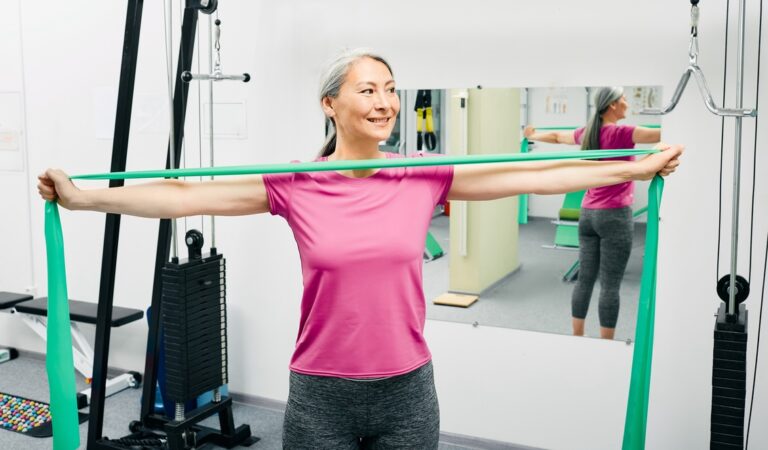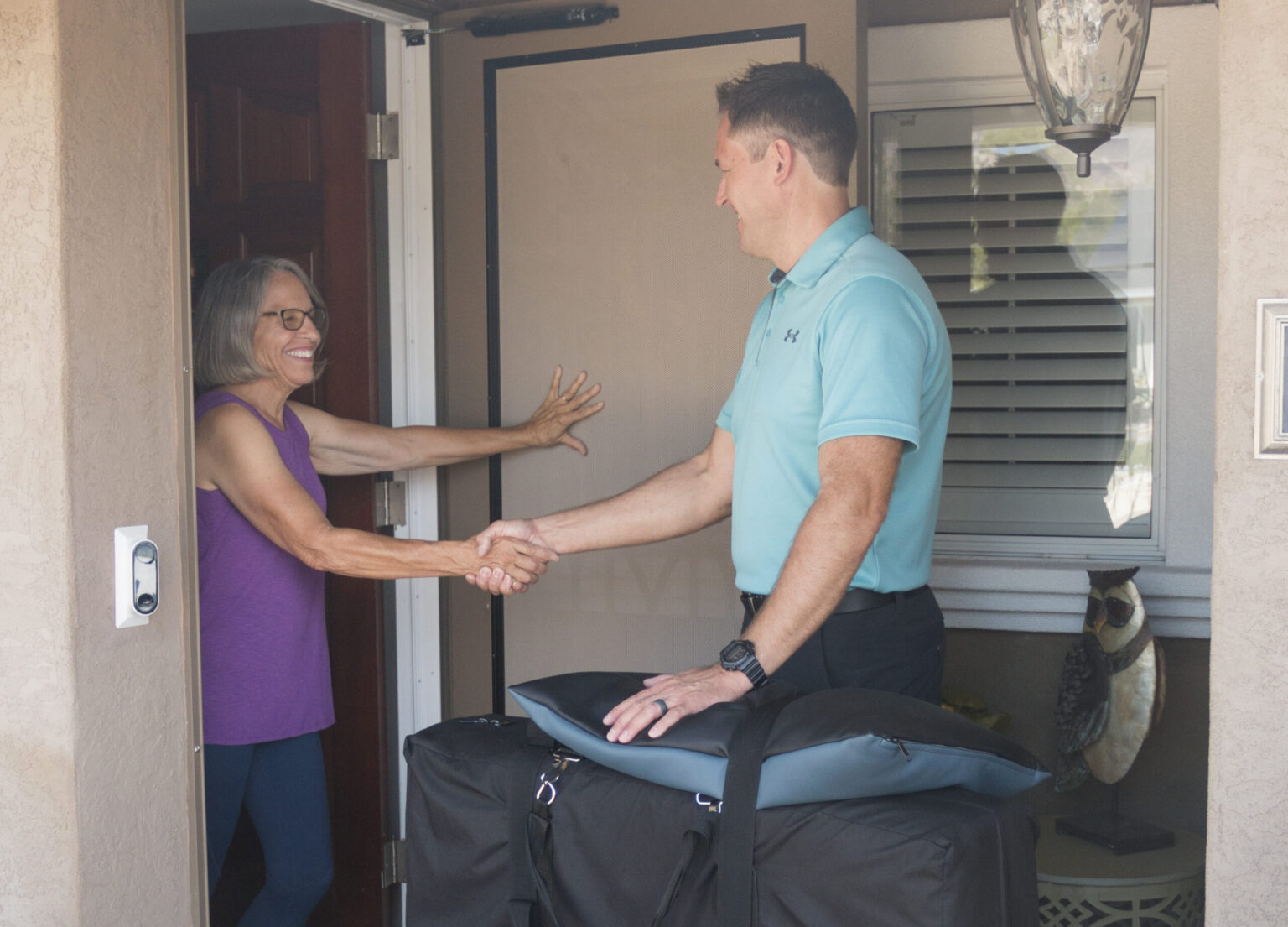What to Wear at Physical Therapy
So you’ve found a physical therapist near you, worked with your insurance to see what’s covered, and now it’s the morning of your first physical therapy session.
If you find yourself staring at your clothes, wondering “what should I wear to physical therapy?” — you’re not alone.
We’ll dive deep into the answer below, but the bottom line? Wear comfortable clothing that improves your experience and increases your chance for success.
Why does what you wear matter for physical therapy?
You don’t need to go out and purchase new clothes for your physical therapy appointment, but you should put some thought into it.
Why is it so important to wear the right clothing at physical therapy?
Imagine someone needed to see a physical therapist for their knee pain, but they showed up to their physical therapy treatment wearing tight-fitting skinny jeans. Or picture a client wearing slippers to a session that involves outdoor walking. In the first example, the physical therapist wouldn’t be able to easily see and understand the treatment area. In the second example, the patient would be at risk of further injury for not wearing appropriate footwear.
So what to wear to physical therapy?
How to Dress for a Physical Therapy Session
As the name inherently suggests, you’re going to get physical in your outpatient physical therapy sessions. Be prepared to move a lot!
Think comfortable clothing that allows you a wide range of motion and allows the physical therapist to see the affected body part you’re treating.
Shoes
Proper footwear is essential! Comfort and safety are paramount here.
Choose socks and supportive, closed-toe athletic shoes. You may be asked to perform exercises that involve standing on surfaces you don’t normally use, so support and non-skid soles are critical.
If you are seeing a physical therapist to help with a foot or ankle injury, your physical therapist may want you in bare feet for part of the session, but it’s better to come with supportive footwear.
Do:
Don't:
- wear socks
- choose supportive, closed-toe athletic shoes, like tennis or running shoes
- wear heels, shoes with non-slip soles, dress shoes, or open toed shoes
Clothes
There are two big concepts here - wear clothing that allows you to move freely and allows your physical therapist access to your injury.
First – Can you easily move in your clothes? Test your outfit’s suitability by doing some basic exercises before your appointment. Other than the injury you’re treating, you should be able to move easily and comfortably in your clothes for outpatient therapy. Think your favorite loose t-shirt and loose fitting bottoms with an elastic waistband.
Second – Consider the nature of your injury. It’s important that your physical therapist can see and touch the affected area. If you have a knee injury, wear shorts that will allow the physical therapist to see and access your knee. Likewise, if you’re working on a shoulder injury, consider wearing a tank top.
Do:
Don't:
- wear loose fitting clothes that allow you to move and your physical therapist to access the treatment areas
- wear layers
- wear dresses, skirts, or tights
- wear heavy sweaters or turtlenecks
- wear tight clothing that restricts movement or blood flow
Emotional Comfort Matters, Too
You'll want to feel emotionally comfortable.
Physical therapists will want to make sure you’re getting the most out of every session—and you can’t concentrate on what they’re saying if you’re concerned about the fit and feel of your clothes.
No matter how cute or stylish an outfit is, if you feel uncomfortable – physically or emotionally – then it’s not right for physical therapy appointments.
Choose an outfit that you feel comfortable in, so you maximize your physical therapy appointment, without feeling the pinch of a too-tight waistband or an uncomfortable fabric rubbing against your skin.

Examples of What to Wear to Physical Therapy
Okay, so you’ve got the basics – you know to avoid wearing restrictive clothing. But what should you wear to physical therapy – specifically for your condition?
If you have an upper body injury, such as back pain, neck pain or shoulder pain, you’ll want to wear a tank top or loose fitting t-shirt.
A sports bra can be beneficial for women, as they allow easy movement and support.
When undergoing physical therapy for lower-body injuries, such as a hip or leg pain, it’s best to wear shorts or loose fitting pants that can easily roll over the knee. You’ll also want to choose bottoms that have an elastic waistband for comfort and support.
While yoga pants and leggings may be comfortable, leggings can be hard to adjust and move to access the treatment area.
If you have long hair, it is beneficial to have your hair pulled back into a ponytail or braid. (This allows you to move without literally pulling your hair out!)
You’ll want a supportive swimsuit and maybe a good pair of goggles! Remember to bring a towel to dry off and extra clothes for after your aquatic physical therapy appointments.

Are you looking for a physical therapist near you?
If you’re in the East County area of San Diego, Live Life Physiotherapy can help! Live Life Physiotherapy provides customized mobile physical therapy in San Diego to those who need it, where they need it.
Every day, we help residents of La Mesa, El Cajon, Santee, Lakeside, Del Cerro, San Carlos, and the surrounding areas with their physical therapy needs by removing many of the common restrictions and challenges of traditional physical therapy. Our ultimate goal is to help you live your best life.
If you are ready to live life on your terms, contact us today!
